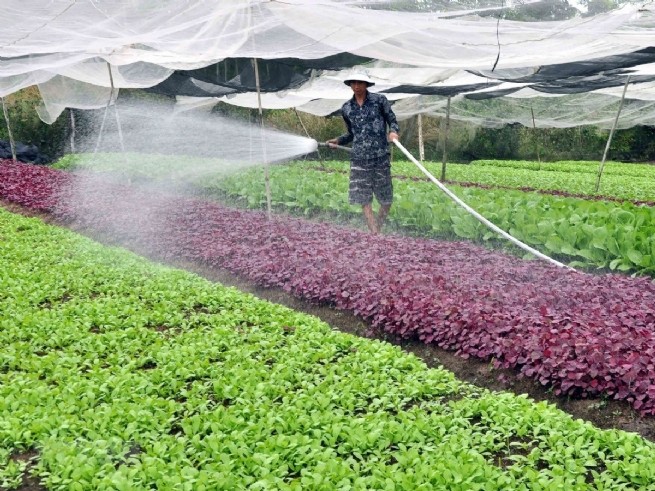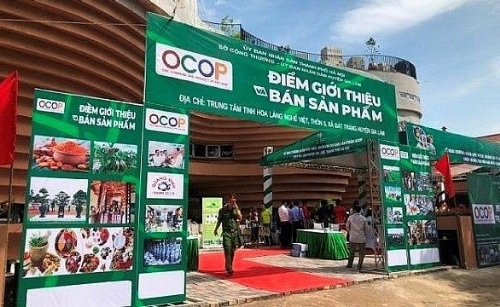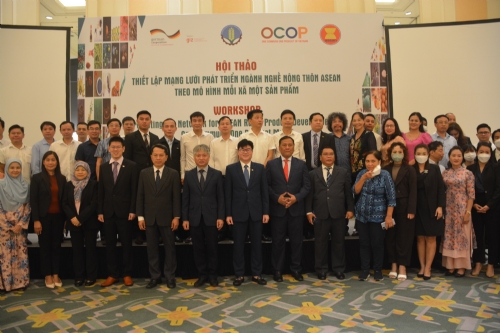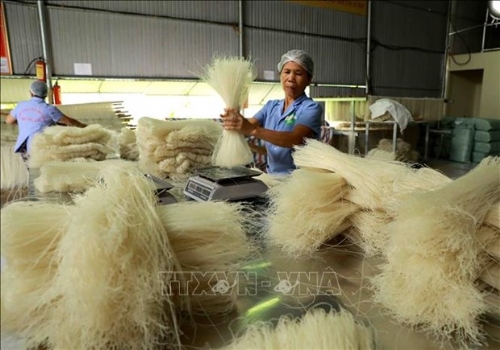Opportunities for Strong Development of Agricultural Value Chains
Tuesday, August 4, 2020 10:24

Linking production with consumption of agricultural products plays a vital role in agricultural development, as it helps increase benefits for value chain actors, especially farmers, thus helping raise the scale of production and improve management and contractual production. This is important in the current context of the global Covid-19 pandemic.
In the current context, rising consumer pressures on food safety are creating unprecedented opportunities for development of safe food supply chains where a short supply chain approach needs to be encouraged for development.
In fact, the regulatory framework for Vietnam's agricultural supply chain was already issued such as the Prime Minister’s Decision 23/QD-TTg dated January 6, 2010, approving the Project on “Rural trade development in 2010-2015 and to 2020”; the Prime Minister’s Decision 62/2013/QD-TTg dated October 25, 2013, on “Policy on encouraging cooperative development and linking production with consumption of agricultural products, and building large-scale fields”; the Prime Minister’s Decision 1600/QD-TTg dated August 16, 2016, approving the “National Target Program on New Rural Development in 2016-2020”. Many localities have formed product value chains from production, processing, and consumption engaged by enterprises, cooperatives and farmers in agriculture, forestry and fishery, for example a closed vegetable chain model of VinEco Agricultural Production Development Investment Limited Company and a closed livestock chain (production, processing and animal health) run by CP, Mavin and Dabaco.
With many support and incentive policies for businesses and cooperatives in production and consumption, more and more agricultural value chains have been established in different forms of linkage, for example linking product consumption and services and pooling capital for production investment.
Notably, in recent years, Vietnam has formed development chains at three levels: national products, provincial products and local products. In order to focus resources on developing key national agricultural value chains, the Ministry of Agriculture and Rural Development has issued a list of national key agricultural products to guide priority in attracting businesses to invest in agriculture and rural areas as per Decree 57/2018/ND-CP with 13 key products, including rice, coffee, rubber, cashew, pepper, tea, vegetables, fruits, cassava, pork, poultry meat and egg, catfish, shrimp and wood products.
In addition, the provincial key product value chain has gradually been formulated, with the special attention of the provincial government, to quickly identify and promulgate the list of provincial key agricultural products to attract investment capital and speed up production cooperation among enterprises, cooperatives and farmers. Currently, many provinces across the country have also issued provincial key product categories like An Giang, Son La and Kon Tum.
The development of locally distinctive product chains (or the One Commune One Product Program - OCOP) has also been accelerated since 2013. Quang Ninh province took the lead in the country to carry out it methodically. From initial results of OCOP product development, to promote this program, on May 7, 2018, the Prime Minister issued Decision 490/QD-TTg approving the National Program on OCOP Program for 2018-2020. According to the Ministry of Agriculture and Rural Development, by the end of 2020, at least 50% of existing products or about 2,400 products will be standardized.
To enhance Vietnam's agricultural value chain, Deputy Minister of Agriculture and Rural Development Tran Thanh Nam has proposed some short-term solutions: Stepping up the information and communication on production chain, on cooperation in production and consumption of agricultural products, and on standards and market information (prices and forecasts); accelerating the application of standards to improve product quality, ensure food safety and build brands; boosting trade promotion, market expansion, trademark registration and protection; organizing distributors, supermarkets, food chains, processors and exporters.
In addition, to deal with difficulties in the agricultural market and looking for a long-term, sustainable solution, the Ministry of Agriculture and Rural Development has also actively developed the domestic market to consume agricultural products; studied and forecast supply and demand; and provided timely market information for localities, businesses and people to adapt production. Some contractual agricultural production models have partially helped farmers sell products at stable prices and face low risks. Production cooperation forms based on agricultural value chain, engaged by enterprises, cooperatives and farmers, have become quite popular.
By Minh Ngoc, Vietnam Business Forum

 THE PROGRAM COOPERATED WITH CENTRAL COORDINATION FOR NEW-STYLE RURAL DEVELOPMENT
THE PROGRAM COOPERATED WITH CENTRAL COORDINATION FOR NEW-STYLE RURAL DEVELOPMENT
Other news
- HANOI: Promoting the consumption of craft village products and developing community tourism(11/5/2022 3:16:04 PM)
- Chuong My: Effectiveness from the One Commune One Product Program(11/3/2022 10:04:10 AM)
- Thanh Hoa develops OCOP products(11/1/2022 1:30:31 PM)
- Promoting the network for Asia Rural Product Development on one commune one product(8/30/2022 9:43:23 AM)
- Phu Tho eyes 56 new 3-star OCOP products for 2022(8/23/2022 3:09:56 PM)
- Opening of the OCOP product introduction week in Hanoi in 2022 in Phuc Tho district(8/1/2022 3:28:38 PM)
- Evaluation and classification of OCOP products Hoan Kiem District in 2022(7/27/2022 10:10:23 AM)
- Hanoi turns to green, sustainable agricultural sector(6/28/2022 4:10:22 PM)
- OCOP Forum in the Mekong Delta - Dong Thap 2022: Opening up great opportunities for regional products.(5/4/2022 2:38:13 PM)
- Over 1,000 spice products on display in Ho Chi Minh City(4/29/2022 2:34:02 PM)
The featured news
-
HANOI: Promoting the consumption of craft village products and developing community tourism
-
Promoting the network for Asia Rural Product Development on one commune one product
-
Phu Tho eyes 56 new 3-star OCOP products for 2022
-
Opening of the OCOP product introduction week in Hanoi in 2022 in Phuc Tho district
-
Evaluation and classification of OCOP products Hoan Kiem District in 2022






